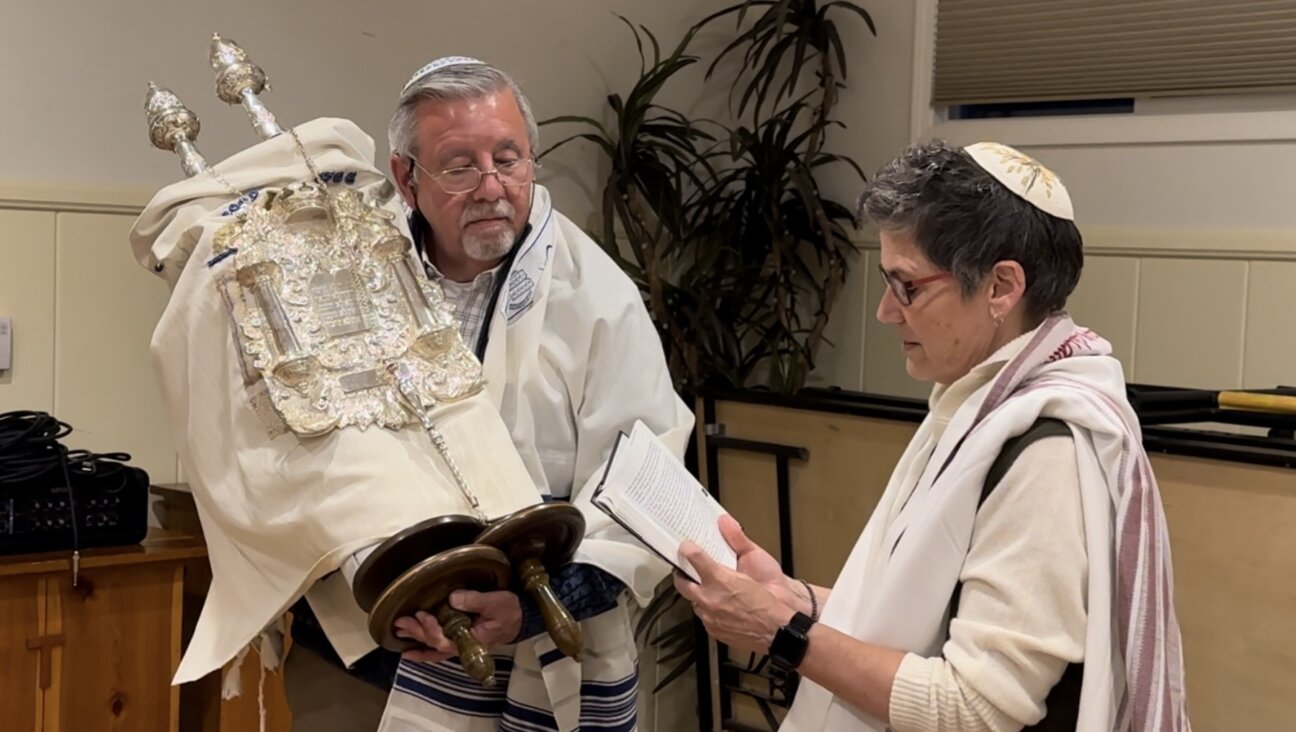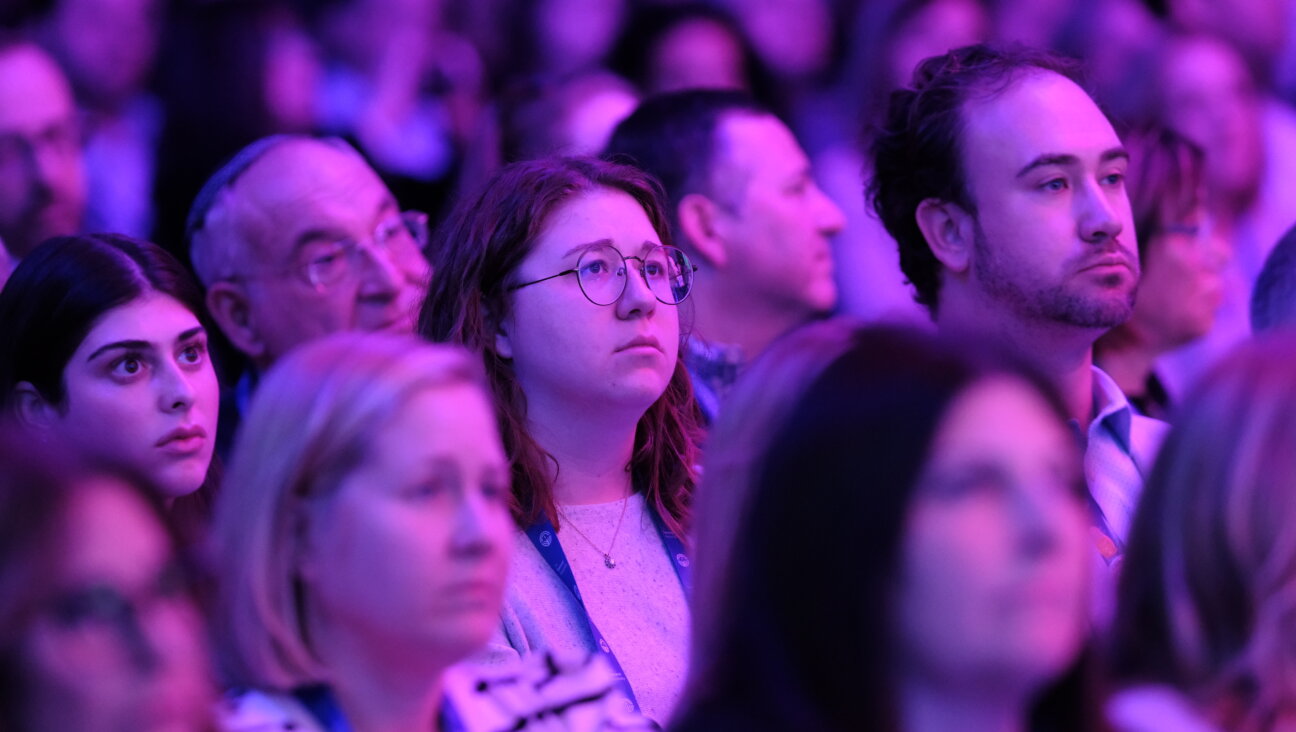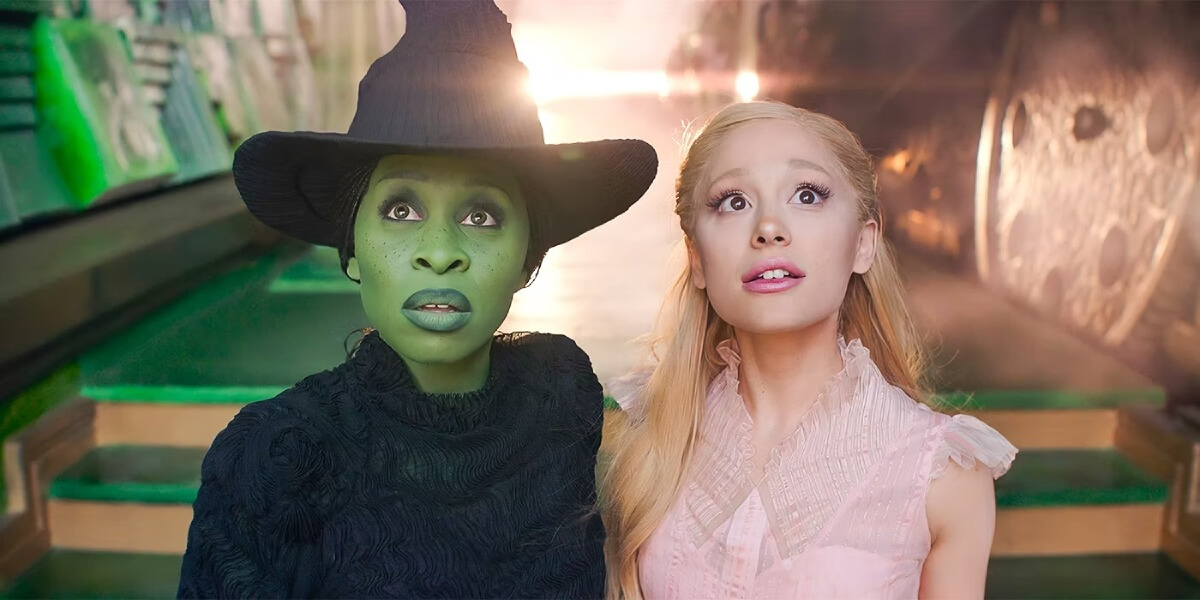A Yiddish Sing-along
“Nora’s Will’ — In Search of a Kosher Funeral — Not Necessarily Kosher L’pesach
So how do you bury a Mexican-Jewish woman who committed suicide? A woman who, before doing the deed, sets a meticulous Seder table, leaves a refrigerator full of food with labeled cooking instructions and designates her ex-husband — an atheist — whom she divorced 20 years earlier, to take care of the details? The film “Nora’s Will,” which is directed by 33-year-old Mariana Chenillo and garnered seven Ariels (Mexico’s version of the Academy Awards), offers serious, comedic and, at times, outrageous moments. The film’s cast of characters includes Nora’s ex, Jose, exquisitely played by Fernando Lujan; assorted relatives; two rabbis at odds about burying a suicide victim; members of the chevra kadisha, or burial society; Catholic funeral expediters, and a devoted family housekeeper who spends days preparing unrecognizable Passover specialties for the Seder. “I took it from reality,” Chenillo told me during our conversation at the Walter Reade Theater several days before the film’s October 15 New York City release. “My mother’s parents were from Germany. My father was Greek… from Salonika. Both came to Mexico during World War II.” It was the “Ashkenazic-Sephardic melding,” Chenillo explained, “with Mexican style gefilte fish — with tomatoes. But, the matzo balls were authentic. ”
I commented about Nora’s beautiful apartment, with its marble floors, polished wood doors and meticulous décor. Chenillo explained: “The neighborhood was called Polanco. The houses were built in the 1960s, 1970s. Two apartments to a floor. They were full of light.” I asked her how much interaction there was, and is between the Jewish community and the Mexicans. “Unlike the Argentine-Jewish community, the Mexican-Jewish community is a closed community, doesn’t let others know… is very insular,” Chenillo responded. “Now it is changing a little.”
“The Jewish Traveler: Hadassah Magazine’s Guide to the World’s Jewish Communities and Sights” (Jason Aronson Publishers, Inc., 1994), edited by** Alan M. Tigay**, notes: “Mexico City Jewry is a study in contrasts — close-knit yet diverse, a part of the Mexican fabric yet a community apart…. Seventy-five percent of Jewish children attend one of the city’s eight Jewish schools.” There is also the following observation: “Though he never belonged to the Jewish community, the most famous Jew ever to live in Mexico was Leon Trotsky — who arrived in Mexico City through the intervention of Diego Rivera in 1937. [While there] he admitted to a reporter of the Jewish Daily Forward that German and Soviet anti-Semitism had convinced him of the need for a Jewish territorial base [though he did not see Palestine as the answer]. He was assassinated in Mexico City in 1940.”
Celebrating the 95th Birthday of Yiddish Theater Diva and “Argentina’s Spitfire,” Shifra Lerer.
Hosted by the Yiddish Artists and Friends Actors Club, the October 13 “Mazel tov!” to Yiddish theater doyenne Shifra Lerer on her 95th birthday was held at Manhattan’s Sutton Place Synagogue. It was an evening of recollections and a plea for a waning art form. Hosted by Actors’ Club President Corey Breier, the 180 guests — friends, family and colleagues — shared the trajectory of Lerer’s life, which included her stardom in Argentina, where she was born, and in America. It was noted that her mother was born in Jewish folklore’s infamous town of fools, Chelm (oy!), and that when Yiddish theater great Maurice Schwartz used to come to Argentina, he insisted that Lerer be part of his troupe. Known as “Argentina’s Spitfire,” the still-beautiful Lerer told the guests, in whispered Yiddish that they “should remember [that] the actors were the ones who gave their lives for the Yiddish theater, not for parnose [wages], but for the sake of Yiddishkeit, Yiddish culture. I hope the young generation will [continue] to create more Yiddish theater.” Among Lerer fans that night was Nahma Sandrow, author of “Vagabond Stars: A World History of Yiddish Theater” (Harper and Row, 1977), which includes several references to Lerer.
“I only saw her in comic roles,” Sandrow recalled during our chat. In her book, she cites Lerer as a cast member in the Jewish Nostalgic Productions, Inc.’s 1972 mounting of “Yoshe Kalb” — one of Schwartz’s greatest hits — performing with now long-gone Yiddish theater stars David Opatoshu, Miriam Kressyn, Jack Rechzeit and Reizl Bozyk (who portrayed Bubbie Kantor in Joan Micklin Silver’s film “Crossing Delancey”). Sandrow also notes Lerer’s performance in the 1976 Joint Arts Council of Queens’ production “Quickly Turn the Wheels,” a play in which the actors evoked “the suffering and joys of the immigrants at the turn of the century.” Sandrow added: “I also saw her in 1999 at Yarnton Center in Oxford, England, at an international conference on the Yiddish theater.” Lerer’s film credentials include appearances in Barry Levinson’s 1990 film, “Avalon,” and in Woody Allen’s 1997 film, “Deconstructing Harry.”
The evening included a musical tribute — in Yiddish and Spanish — by Yiddish theater star Hy Wolfe and Tony-nominated Broadway director and singing star Eleanor Reissa, who is also a past artistic director of the Folksbiene. She flew in for the tribute from New Orleans, and then continued our “Shifra” conversation by phone “near the Mississippi River.” “What’s with Mississippi?” I wondered. She told me she was in rehearsal for “Soul Doctor,” a play about Shlomo Carlebach. “I play Carlebach’s mother…. It will be at the Mahalia Jackson 2,000-seat theater!” Returning to the subject of Lerer, Reissa continued: “The first Yiddish show I did was with Shifra. It was the most important job I ever had in the business. The play was “Rivkele Dem Rebns*” (“Rivka the Rabbi’s Daughter”). It was choreographed by Felix Fibich and starred the Romanian actress, Mary Soreanu. Shifra was then 63 and played the virginal daughter. Imagine! Reizl Bozyk, her contemporary, played Shifra’s mother! Soreanu left the first night, and I ended up playing the title role.”
GOLDENLAND YIDDISH SING-ALONG AT CONGREGATION RODEPH SHOLOM: A GROISER DERFOLG —A HIT!
The turnout at the October 12 Third Annual All Star New York Yiddish Sing-along, held at Manhattan’s Congregation Rodeph Sholom, was an amazing event with a stellar lineup of performers — including the entire audience. With National Yiddish Theatre-Folksbiene artistic director Zalmen Mlotek and conductor Binyumen Schaechter alternating at the piano, and a lineup of vocalists that included Cantor Robert Abelson, Joanne Borts, Adrienne Cooper, Cantor Rebecca Garfein, Avram Mlotek **and **Daniella Rabbani, it was, as they say in Yiddish, ibergepakt (loose translation: a packed evening). Call it a surfeit of riches. Expertly hosted by Breier and featuring the All Klezmer Band, the event was produced by Moishe Rosenfeld. For starters, a large prompter with English transliteration of the Yiddish lyrics got the entire audience singing, even those for whom mameloshn was the foreign language their parents spoke “when they didn’t want the children to understand.”
The artists articulated the songs so beautifully and emotionally that often-familiar lyrics revealed heretofore unfamiliar nuances. Songs ranged from the dramatic and tragic to “shtetl light.” A few, like the oft sung “Margaritkelekh” (“Daisies”), revealed an unexpected undercurrent of disquietude. There was the romantic betrayal of “Yoshke Fort Avek” (“The Train Song”): Yoshke has left on the train, leaving the one-night-stand with a souvenir — a bun in the oven. And the Soviet ode “Dzhankoye,” which extols Jewish tractor operators and Jews who work physically hard, as contrasted with the anti-Semites’ image of Jews as slurpers of fatty chicken soup. The song proclaims, “Spit in the faces of the [Jews’] enemies.”
With no disrespect to the adult performers, the evening’s breakaway hit were sisters Reyna and Temma, aka the Shekhter Daughters. Temma delighted the audience with her animated performance of “Alter Donald,” a Yiddish rendition of “Old MacDonald Had a Farm” (lyrics by Teddi Schwartz). Running down the roster of farm animals, she articulated — in a Yiddish dialect — each creature’s sound. It doesn’t get any funnier. For those whose Yiddish is a bit rusty — or nonexistent — may I suggest that, in anticipation of next year’s sing-along, you take a hint from Cole Porter’s lyrics in “Kiss Me Kate” and instead of Shakespeare, “Brush up your Yiddish/Start singing it now/Brush up your Yiddish/And your mishpokhe you will wow!”
A Chat With Filmmaker Margarethe von Trotta, Whose Heroines Have Smarts and Chutzpah
I had always hoped to meet German filmmaker Margaretha von Trotta, who chose women of moral and intellectual strength as her heroines. There was her 1986 film, “Rosa Luxemburg,” starring Barbara Sukowa as Rosa Luxemburg (“Red Rosa”), the Jewish born-in-Zamosc, Poland, Marxist revolutionary who was murdered in Berlin in 1919. In the 2003 film “Rosenstrasse,” her film of resistance and rescue, von Trotta showcased the Aryan wives who, facing machine guns, prevailed in having the Nazis release their Jewish husbands. Her latest opus, “Vision: From the Life of Hildegard von Bingen,” again stars Sukowa as the intellectually gifted, writer, composer, ahead-of-her time 12th-century Benedictine nun/magistra (abbess) who managed to “nudge the stained-glass ceiling.” The film is a fascinating journey into time, place and mind. And here I was on October 14, at Café 65 at Lincoln Center’s Alice Tully Hall, chatting with von Trotta. “It’s not that I am interested in Jewishness,” von Trotta said in response to my question about her choosing Jewish themes. “I am interested in human beings, and” she paused, “most important beings are Jewish — so much quicker and more interesting for me.”
In describing von Bingen — the 10th child in her family who was given to the church (a common practice by noble families), von Trotta explained something in the film that may seem odd: “In medieval times, contracts were sealed with a mouth-to-mouth kiss.” Though von Bingen made a vow never to leave the convent, she managed to found the first all-female convent, Kloster Rupertsberg, in 1150; she was an acknowledged “visionary recognized by the pope,” and wrote about naturopathy, healing, plants and animals. She was a voracious reader and composer of music. She traveled throughout Europe teaching, and in 1178 “runs into conflicts with the Church for refusing to have the body of an excommunicated man who had been buried in consecrated ground dug up.” (Shades of “Nora’s Will”)
Filmed on location, one of the shoots was at the Cistercian convent of Kloster Maulbronn in Baden Wurttemberg. According to Markus Zimmer, the film’s producer, “ The convent… unlike other structures, had never been restored with baroque or gothic architectural elements in later centuries.” The medieval fashions are exquisitely replicated, and the cinematography makes the period palpable.
Von Trotta noted, “You know she was against the massacres in Cologne against the Jews” (a reference to the May 1096 crusader-en-route-to-Jerusalem slaughters that also included the towns of Speyer, Worms and Mayence).
Her next project: “Hannah Arendt, the essence of Arendt, the controversy.” I mentioned that my father’s correspondence with Arendt is with his archives at Yeshiva University. That he supplied documentation that was used in the Nuremberg Trials. We would have talked more, but von Trotta had to make a train for another screening.














